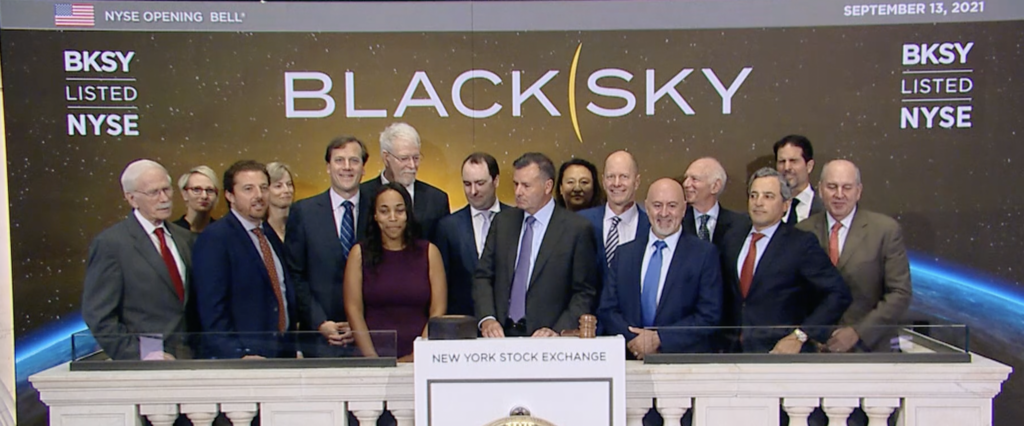BlackSky is projected to earn $40 million this year and is forecasting to more than double that amount next year
WASHINGTON — BlackSky CEO Brian O’Toole on Sept. 13 rang the opening bell of the New York Stock Exchange.
The satellite imagery and geospatial data provider began trading on the NYSE on Friday, a day after closing a merger with a special purpose acquisition company.
The SPAC deal unleashed $283 million in capital that the company plans to spend to hire people, build and launch satellites, and develop more advanced data analytics software, O’Toole told SpaceNews.
An immediate goal is to expand BlackSky’s sales and marketing operations, he said. “We’re seeing a lot of demand in the market, both in the government and the commercial sector so we’re building out a reseller network and sales teams.”
As a public company, BlackSky will be under pressure to show it can meet ambitious growth targets. It projects to earn $40 million this year and is forecasting to more than double that amount next year, said O’Toole.
More than 90% of the company’s revenues currently are from government contracts, primarily from the National Geospatial Intelligence Agency, the National Reconnaissance Office and the Defense Department. Next year the company expects to win more defense and intelligence contracts but also sign up new commercial customers, O’Toole said
BlackSky has six satellites in orbit. Six more are now sitting at Rocket Lab’s launch site in New Zealand waiting for launch opportunities later this month after the country lifts a coronavirus lockdown.
Long term, the company intends to deploy 30 satellites, said O’Toole. Its satellites are made by Leo Stella, which is 50% owned by BlackSky.
BlackSky’s service brings in data from its own satellites and from other providers. It combines visual imagery with data like synthetic aperture radar, radio-frequency mapping and Internet of Things feeds.
“We’ll be continuing to expand those and build analytics around them,” said O’Toole.
The data is offered as software-as-a-service accessible over the internet. Users can log on, and point and click to task a satellite. They can get data within 90 minutes or subscribe to the company’s analytics feeds.
O’Toole said the company saw an uptick in sales during the COVID-19 pandemic as government agencies shifted to telework and needed a platform that analysts could access without having to go into the office. “And we’re seeing it pretty much across most of the industries that we’re talking to right now.”
